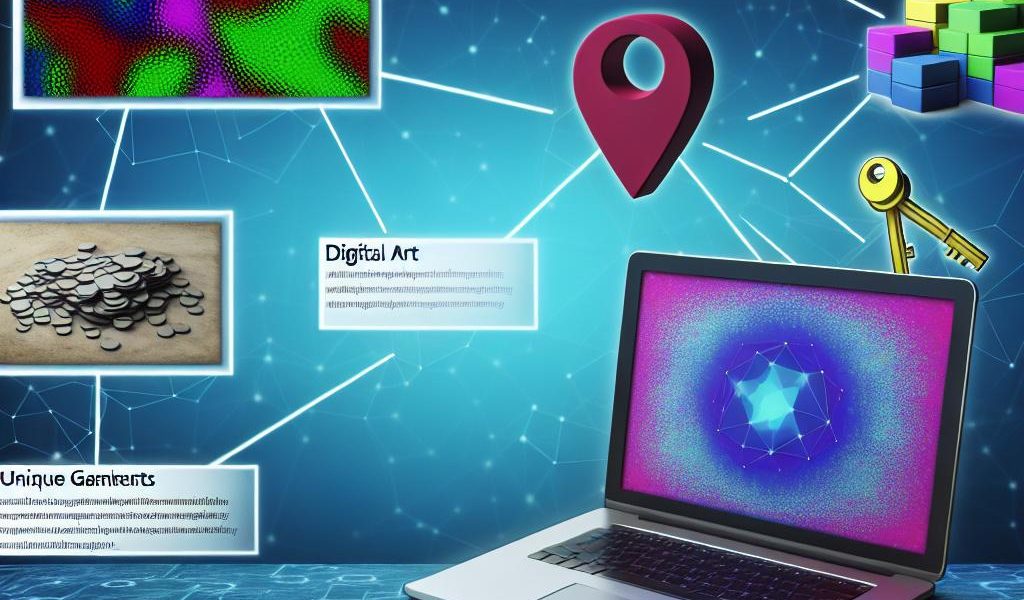
What are NFTs?
admin - April 1, 2025Understanding NFTs
NFTs, or Non-Fungible Tokens, have gained significant attention in recent years as they have transformed the way we perceive ownership and value in the digital space. To understand NFTs, it is essential to delve into their definition, functionality, and impact on various sectors. For a more comprehensive understanding of their broader impact, you may explore additional resources, such as those available at Cryptic Vision.
Definition of NFTs
At their core, NFTs are unique cryptographic tokens that exist on a blockchain. Unlike cryptocurrencies such as Bitcoin or Ethereum, which are fungible and can be exchanged on a one-to-one basis, NFTs are non-fungible. This signifies that each NFT has unique properties and cannot be exchanged on a like-for-like basis. More information on blockchain can be found at Investopedia.
NFTs leverage the power of blockchain technology to record and verify the uniqueness and ownership of a particular asset. This process ensures that each NFT is distinct from others, much like a fingerprint or a snowflake. This unique aspect renders them particularly valuable in digital environments where proving ownership and authenticity can be challenging.
How NFTs Function
NFTs function via smart contracts, which are self-executing contracts with the terms of the agreement directly written into the code. These smart contracts are stored on a blockchain, ensuring authenticity and ownership tracking. Smart contracts essentially automate the process of verifying the transaction details, reducing the need for intermediaries, and making transactions secure and transparent for all parties involved.
The Ethereum blockchain is one of the most popular platforms for NFTs because of its robust infrastructure and wide acceptance, although other blockchains, such as Binance Smart Chain and FLOW, are also gaining prominence as they develop specific features to handle NFTs more efficiently. NFTs take advantage of blockchain’s immutable, decentralized ledger to guarantee the authenticity of the assets and track their ownership through transparent documentation.
Creation and Ownership
Creating an NFT, often referred to as minting, involves converting digital files such as art, music, or videos into crypto assets on the blockchain. Minting an NFT is the process where these assets are tokenized. This involves creating a representation of the underlying asset on the blockchain, making it an NFT that can be bought, sold, or traded.
Once minted, the NFT can be bought, sold, or traded across various NFT marketplaces. Ownership of an NFT is recorded on the blockchain, providing a verified record of authenticity and provenance. This record does not just help in asserting ownership but can also track the history of the asset as it changes hands over time, thus adding a layer of richness and historical data to the NFT.
Use Cases of NFTs
NFTs have found applications across numerous industries due to their versatility and the digital transformation witnessed in recent times. These include:
Art: Perhaps the most popular use case for NFTs, they allow artists to reach a global audience and sell their work directly without intermediaries. This democratizes the art marketplace by removing the barriers created by traditional gallery systems.
Gaming: In-game assets and collectibles can be traded as NFTs. This revolutionizes the gaming industry by allowing players to own their digital assets in a way that is verifiable and transferable across different games and platforms.
Music: Musicians can sell unique copies of their work directly to fans as NFTs, providing them with a new revenue stream and enabling fans to own exclusive music content. This benefits the music industry by reducing dependency on streaming platforms that often underpay artists.
Virtual Real Estate: Digital lands and properties can be purchased as NFTs, offering users the opportunity to own pieces of digital worlds. This is akin to real-world real estate but in a virtual environment that can range from social spaces to entirely new virtual realities.
Beyond these sectors, NFTs are also being explored for their potential in areas like sports collectibles, domain names, intellectual property, and even academic credentials. The potential for NFTs is vast and continually evolving as new use cases are discovered.
Impacts of NFTs
NFTs diverge into both beneficial and controversial aspects when it comes to their impacts. They open up a new revenue stream for creators, enabling them to reach audiences directly, as well as offer enhanced digital ownership control and new ways to authenticate digital content. They provide new ways for collectors and enthusiasts to connect with creators, fostering communities around shared interests.
However, there are significant environmental concerns associated with NFTs due to the energy-intensive nature of blockchain technologies. The process of minting and transacting NFTs on certain blockchains can consume substantial energy, thereby posing sustainability challenges. This has spurred ongoing discussions and efforts towards creating more eco-friendly consensus mechanisms and platforms for NFTs.
Additionally, the speculative nature of NFTs raises questions about their long-term value and viability. Some fear that the NFT market might be a bubble driven by short-term hype rather than sustainable value, leading to the volatility and unpredictability of NFT prices. This has resulted in a mixed reception from the public and industry experts about the future of NFTs.
Challenges and Opportunities
The landscape of NFTs is filled with both challenges and opportunities. As the technology and market continue to mature, there is potential for standardization and increased accessibility that could further democratize creation and access in numerous industries. This provides fertile ground for innovation, where developers and entrepreneurs can create new platforms, tools, and services that enhance the NFT ecosystem.
On the flip side, regulatory challenges loom as governments and financial entities seek to understand and place boundaries around blockchain technologies and NFTs. Ensuring that NFT markets are not used for fraudulent activities like money laundering or tax evasion is a critical area for future policy development. Ensuring user security and safeguarding intellectual property rights are ongoing concerns that need addressing.
Conclusion
As the digital landscape evolves, NFTs continue to play a significant role in reshaping digital ownership and the creative economy. While challenges like environmental impact and regulatory concerns remain, the potential for innovation in how digital assets are managed, valued, and transacted is immense. The exploration of NFTs by various stakeholders continues to unveil new opportunities and challenges in this rapidly developing sector. More resources can be gleaned from platforms like Forbes.
This article was last updated on: April 1, 2025
